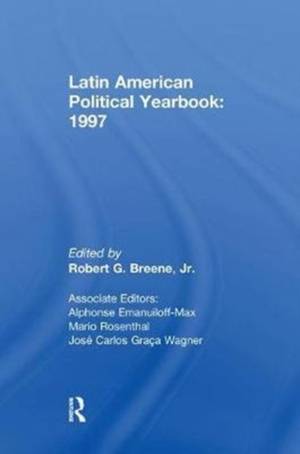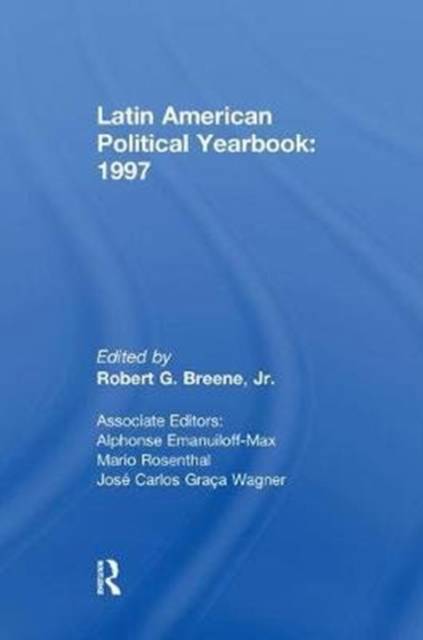
- Retrait gratuit dans votre magasin Club
- 7.000.000 titres dans notre catalogue
- Payer en toute sécurité
- Toujours un magasin près de chez vous
- Retrait gratuit dans votre magasin Club
- 7.000.0000 titres dans notre catalogue
- Payer en toute sécurité
- Toujours un magasin près de chez vous
40,95 €
+ 81 points
Format
Description
Latin America constitutes a region well-endowed with sovereign nations, cultural differences, and varying states of development and political stability. The end of the cold war and the de-cline of revolutionary movements and regimes has cast political perceptions of the region in a new light even as it has wrought momentous changes in the individual countries themselves. Latin American Political Yearbook: 1997 provides a comprehensive overview, analysis, and summary of the major political and economic trends and events in Mexico, Central and South America, and the Caribbean both for their significance within special coun-tries, the entire region, and relations with the world at large.Elections and the status of political forces in Latin America are the focus of part 1. It provides an up-to-date, realistic definition of today's political "Left" and describes the political situ-ations in the Central American, MERCOSUR, Andean, and Caribbean nations. Moreover, special consider-ation is given to the case of Nicara-gua. In part 2 the politico-economic backgrounds of such representative Latin American nations as Argentina, Bolivia, Brazil, Ecuador, Honduras, Paraguay, and Venezuela are updated to demonstrate that corruption and collectivism have been responsible for most, if not all of the region's economic woes. The next two parts are con-cerned with the Hemispheric left (HL) and the Hemispheric Left Support, re-spectively, the former dealing with the loose association of Latin American Marxist and Marxist-Leninist organi-zations. It begins with an in-depth look at its enigmatic chief, Fidel Castro, and then discusses HL umbrella organizations; Colombian, Mexican, and Cen-tral American terrorist groups; HL narcoterrorism; and the special case of Peru. The book concludes with a look at Latin American international organizations Including trade and tariff associations, technical groupings, re-gional associations, and hemisphere-wide associations such as the Cumbre Iberoamerica, the Grupo de Rio, and the Organization of American States. The year 1996 contained a number of important contests throughout the region and Latin American Political Yearbook provides a timely look at rel-evant background Information neces-sary to an understanding of the statustlons; Colombian, Mexican, and Cen-tral American terrorist groups; HL narcoterrorism; and the special case of Peru. The book concludes with a look at Latin American international organizations Including trade and tariff associations, technical groupings, re-gional associations, and hemisphere-wide associations such as the Cumbre Iberoamerica, the Grupo de Rio, and the Organization of American States. The year 1996 contained a number of important contests throughout the region and Latin American Political Yearbook provides a timely look at rel-evant background Information neces-sary to an understanding of the status of political forces in Latin America to-day. Brimming with facts, this com-pact yet comprehensive volume Is essential reading for political scien-tists, Latin American area specialists, and historians.
Spécifications
Parties prenantes
- Auteur(s) :
- Editeur:
Contenu
- Nombre de pages :
- 290
- Langue:
- Anglais
Caractéristiques
- EAN:
- 9781138511514
- Date de parution :
- 15-11-17
- Format:
- Livre broché
- Format numérique:
- Trade paperback (VS)
- Dimensions :
- 152 mm x 229 mm
- Poids :
- 452 g

Les avis
Nous publions uniquement les avis qui respectent les conditions requises. Consultez nos conditions pour les avis.






